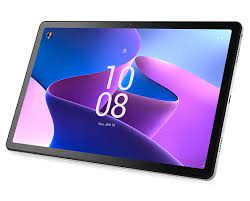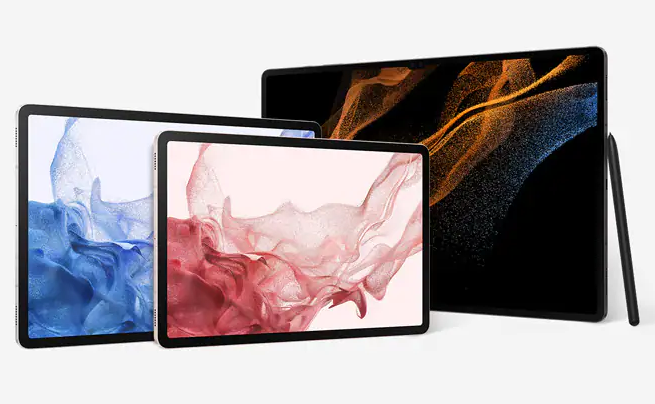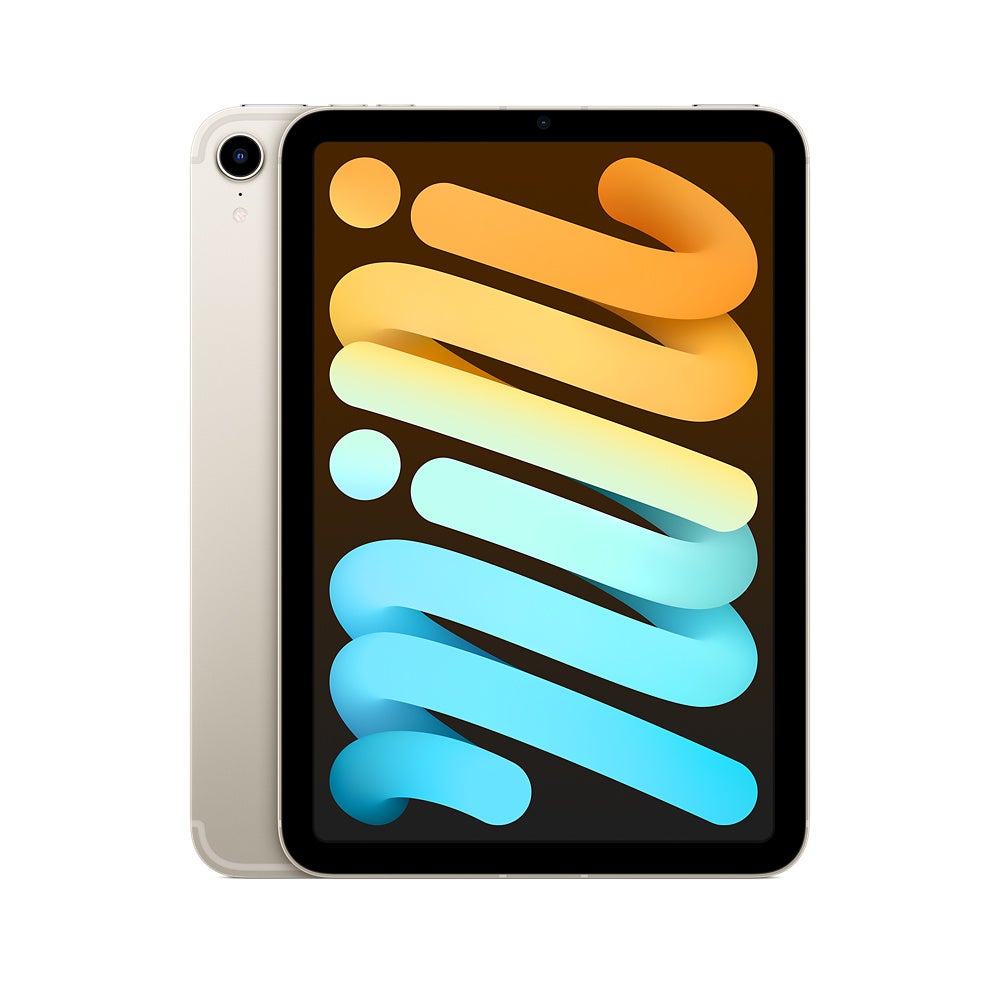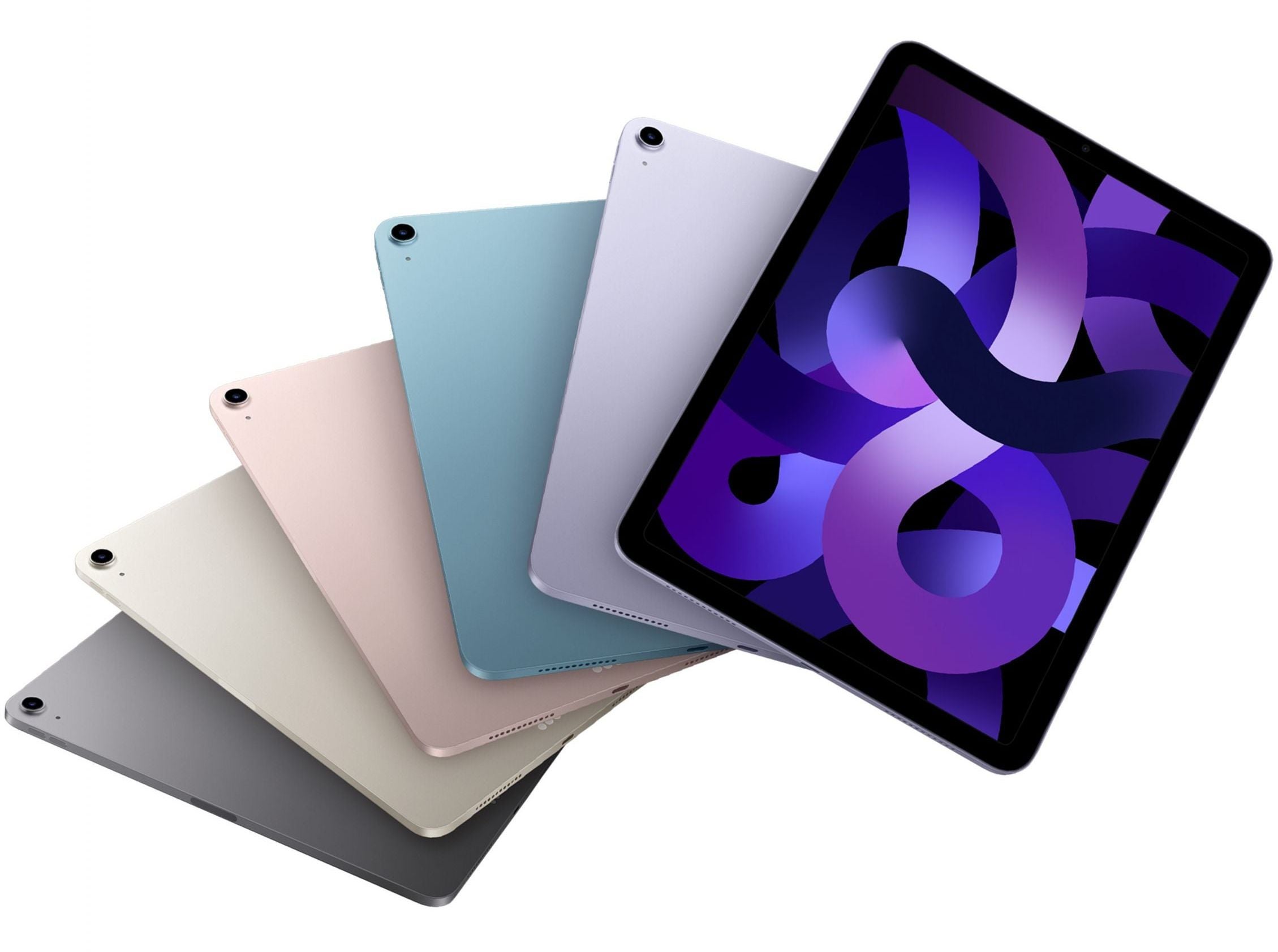If you’re shopping for a new tablet, there’s a strong likelihood it will come down to a choice of two: Android or iPad. Of course, along with weighing up the various hardware specs on offer, the operating system (OS) being run by a device should be a priority consideration.
Tablets running Google’s Android OS are in no short supply, with manufacturers such as Samsung regularly bringing new models to market, while Apple continues to build its ecosystem of iPad devices running iPadOS. In determining what is best for you, it is worthwhile considering a number of factors.
As the tablet market continues to evolve, both Google and Apple typically release new OS versions on a yearly basis. Software updates are also regularly issued. When buying a new tablet, it is certainly worthwhile weighing up what OS version it is running and the range of software features on offer. As we’ll look at below, it’s also important to keep in mind device compatibility when it comes to the release of new OS versions.
In the following guide we look at the functions of an OS and what to keep in mind when it comes to device compatibility. We additionally cover the interface and user experience features on offer from the latest Android and iPadOS versions (Android 12 and iPadOS 15), along with privacy features, and app ecosystem and software integration considerations.
Rounding out this guide, we also take a look at some recently released tablets running the latest Android and iPadOS versions.
In this article, we cover:
- What is an operating system (OS)
- Updates and device compatibility
- Interface and user experience
- Privacy
- Wider ecosystem and interconnectivity
- Possible tablets to consider
What is an operating system?
The most visible function of an OS is to act as an interface between the user and computing device, and in this respect ease of use and the scope of features on offer is very important. Behind the scenes, the OS is also responsible for managing a device’s collective hardware and software components, ensuring everything is running harmoniously.
In the battle for tablet OS market control, Android and iPadOS have emerged as the two clear heavyweight contenders over the past decade. Devices running Android and iPadOS are released regularly. And consumers have a range of options to choose from at different price points.
As we look at below, Android and iPadOS each, respectively, offers a wide variety of features. And what is best for you will largely come down to individual device preferences. However, there are also a number of other factors, including app and software integration, to keep in mind.
As noted above, in this guide we’ll be comparing the latest versions of Android (Android 12) and iPadOS (iPadOS 15). While iPadOS is designed specifically for Apple’s iPad line (as opposed to iOS for its iPhones), Android 12 runs on both smartphones and tablets.
Earlier this year, Google announced the release of Android 12L, an OS specifically designed for tablets and foldable devices, however it is not yet widely available.
Compare broadband providers for free with Canstar!
New operating system versions and tablet compatibility
When weighing up OS merits, you need to consider whether a particular tablet runs the latest OS version (or if the version will be available at a later point). This is particularly relevant when it comes to Android tablets, with OS version availability varying by manufacturer and model.
When Google releases a new version of Android, it will not automatically become available for all Android tablets. Its potential release across different tablets dependents on the device manufacturer. There may well be a delay of months before it is made available.
In addition, many older tablets will not receive the latest version of Android at all. Older tablets running older Android versions may still receive software updates (for a period of time). However newer Android versions are typically reserved for recently released devices.
When it comes to Android devices, manufacturers often also put their own spin on the interface (known as a skin). For instance, Samsung’s One UI 4 skin is designed to “create a customised mobile experience”, providing users a range of options.
Similarly, older Apple tablets will not necessarily be able to run the latest iPadOS. However, with Apple the release of a new OS is more uniform, as it is limited to one manufacturer (as opposed to the multiple manufacturers releasing Android devices).
The interface and user experience
The most visible OS function is its user interface (UI), which will impact how you interact with your device, and access and navigate its various features. As such, you obviously want to ensure a free-flowing and intuitive user experience.
Android 12
Google states that Android 12 features a “totally reimagined UI”. It integrates a range of features that allows for enhanced customisation and increased accessibility, paving the way for a more seamless user experience.
Android 12 UI features include:
- Material You – changing the wallpaper will see Android 12, in turn, changed to match the colours, with colour extraction algorithms allowing users to personalise the look and feel of their device, including notifications, settings, widgets and select apps (for select devices)
- Responsive UI – is designed to respond quickly and expressively to taps, swipes and scrolls, delivering smooth motion and animations
- Conversation widget – puts the user’s conversations on the home screen, while also displaying missed calls, birthdays and other information at a glance
- Visibility – includes a window magnifier for zooming in on a selected part of the screen, extra dim for night-time scrolling, bold text and greyscale colour display adjustment
- Scrolling screenshots – allows users to capture all of the content on a page in one image
iPadOS 15
Apple states that iPadOS 15 brings together a range of features designed to provide a “multitasking experience that is even more intuitive”, making it easier for users to access and navigate multiple apps at the one time.
iPadOS 15 UI features include:
- Multitasking menu – appears at the top of apps, providing easy access to Split View (side-by-side apps) or Slide Over (a smaller window slides in front of another app or window)
- Home screen access – the multitasking layout provides access to the home screen, allowing users to select apps as required
- Shelf – allows users to view all open app windows and switch between them, along with adding and closing windows
- Widgets – can be placed among apps on the home screen, with a larger widget size designed for larger iPad displays
- App Library – has been introduced to iPads, automatically organising apps into different categories
- Quick Note – allows users to take notes anywhere across iPadOS, while Tags makes it easy to categorise and find notes
- Focus – filters notifications based on what the user wants to focus on
- Notifications – a new look includes contact photos and larger app icons, while the notification summary is designed to make it easy to quickly catch up
Privacy
Mobile devices are increasingly being used to store a wide range of personal information, from email and social media, to address and banking details. In line with this, privacy features have taken on increasing prominence in recent years.
Android 12
Google states that Android 12 includes easy-to-use privacy features, designed to provide users peace of mind that they have control over who can see their data and when.
Android 12 privacy features include:
- Mic and camera access – a new indicator in the status bar shows when an app is using the device’s mic or camera (users can also completely disable the mic and camera)
- Location privacy – users can choose between giving apps their precise or approximate location
- Privacy dashboard – displays when apps have accessed the user’s location, camera or mic over the past 24 hours (users can also manage permissions directly from the dashboard)
iPadOS 15
Apple states that iPadOS 15 is designed to provide additional insight into how apps access data, along with protection from unwanted data collection, while also providing users more control over what they choose to share.
iPadOS 15 privacy features include:
- App Privacy Report – shows how apps are using permissions, the domains they contact and how recently they made contact
- Mail privacy protection – hides the user’s IP address, meaning senders can’t link it to other online activity or determine the user’s location, while senders can’t see if and when an email has been opened
- Siri – on-device speech recognition means that audio of the user’s requests is processed on the iPad by default (this means Siri can perform many tasks without an internet connection)
→Related article: How to Keep Your Identity Safe Online
App ecosystem and software integration
Of course, app availability and the broader selection of apps on offer will be a priority consideration for most consumers when weighing up OS merits. It’s also important to note that many apps will generally be compatible with older versions of Android and iPadOS.
Both Android and iPadOS support most major third-party apps, with millions of apps respectively available across both platforms. However, if there is a specific third-party app you want to run, it will be best to confirm OS support (referencing Google Play or Apple’s App Store).
Both Android and iPadOS come with a range of default apps, from email to messaging, video calling, cloud storage and maps. And when shopping for a new tablet, it may well come down to the convenience of sticking with the app ecosystem that you know.
Along these lines, also keep in mind how an Android or iPadOS tablet will integrate with your existing ecosystem of software and services. This includes smart mobile devices, desktops and laptops, wearables, smart speakers and smart home technology.
For instance, if you already own a number of Apple devices, it will be logical to weigh up iPad models as a first port of call. If you own devices running the Android OS, you may first want to explore Android tablet options.
Tablets
The following is a selection of tablets running Android 12 and iPadOS 15, available at a range of price points:

Tab M10 Plus Gen 3
Lenovo unveiled its Tab M10 Plus Gen 3 in early 2022, decked out for cinematic streaming and entertainment, and designed to deliver an immersive viewing experience.
- Display – a 10.6-inch 2K IPS display (2000 x 1200 resolution)
- Operating system – Android 12 (will receive Android 13 in 2023)
- Processor – Qualcomm Snapdragon SDM680, octa-core (4 x A73 2.4GHz + 4 x A53 1.9GHz) (wi-fi; wi-fi + LTE); MediaTek Helio G80, octa-core (2 x A75 2GHz + 6 x A55 1.8GHz) (wi-fi only)
- Storage – up to 128GB; expandable with a microSD card reader
- Camera – a rear 8MP auto-focus camera, and a front 8MP fixed-focus camera
- Connectivity – wi-fi 5; Bluetooth 5.0; LTE (wi-fi + LTE); one USB-C (2.0) port
- Battery – up to 12 hours online video playback, and up to 14 hours web browsing
- Design and dimensions – available in storm grey and frost blue; measuring in at 251.2mm x 158.8mm x 7.45mm, with a weight starting at 465g
Price – the Tab M10 Plus Gen 3 can be found online at prices starting from around $499*

Galaxy Tab S8
Samsung launched its Galaxy Tab S8 line earlier this year, with an emphasis on productivity and seamless integration with the wider ecosystem of Galaxy devices.
- Display – an 11-inch WQXGA display (2560 x 1600 resolution)
- Operating system – Android 12
- Processor – an octa-core 2.99GHz, 2.4GHz, 1.7GHz CPU
- Storage – 128GB (100.9GB available memory); microSD support for up to 1TB
- Camera – 13 and 6MP rear cameras, and a 12MP front camera, with UHD 4K video recording at 30fps
- Connectivity – wi-fi 6E; Bluetooth 5.2; 5G (Tab S8 5G); one USB-C (3.2 Gen 1) port
- Battery – a battery capacity of 8000 mAh (up to 15 hours internet usage time, and up to 15 hours wireless video playback)
- Design and dimensions – the Tab S8 (wi-fi) is available in graphite, silver or pinkgold, and the Tab S8 (5G) in graphite; both models measure in at 165.3mm x 253.8mm x 6.3mm, with the wi-fi model weighing in at 503g and the 5G model 507g.
Price – the Samsung website lists prices for the Tab S8 as starting from $1249*

iPad mini
The iPad mini was launched towards the end of 2021. It delivers both powerful performance and portability.
- Display – a 8.3-inch Liquid Retina display (2266 x 1488 resolution; 326ppi)
- Operating system – iPadOS 15
- Processor – an A15 Bionic chip with 64-bit architecture
- Storage – a choice of 64GB and 256GB capacities
- Camera – a 12MP wide rear camera, with 4K video recording at 24, 25, 30 or 60 fps, and a 12MP ultra-wide front camera, with 1080p HD video recording at 25, 30 or 60fps
- Connectivity – wi-fi 6; Bluetooth 5.0; 5G (wi-fi + Cellular models); one USB-C port
- Battery – up to 10 hours of battery life surfing the web on wi-fi or watching video, and up to nine hours surfing the web using a mobile data network (wi-fi + Cellular models)
- Design and dimensions – available in space grey, pink, purple and starlight finishes; measuring in at 195.4mm x 134.8mm x 6.3 mm, with the wi-fi models weighing in at 293g and the wi-fi + Cellular models 297g
Price – the Apple website lists prices for the iPad mini as starting from $849(*).

iPad Air
Introduced earlier this year, the iPad Air is equipped with Apple’s M1 chip. Apple states it delivers “a massive leap in performance”.
- Display – a 10.9-inch Liquid Retina display (2360 x 1640 resolution; 264ppi)
- Operating system – iPadOS 15
- Processor – an Apple M1 chip
- Storage – a choice of 64GB and 256GB capacities
- Camera – a 12MP wide rear camera, with 4K video recording at 24, 25, 30 or 60fps, and a 12MP ultra-wide front camera, with 1080p HD video recording at 25, 30 or 60fps
- Connectivity – wi-fi 6; Bluetooth 5.0; 5G (wi-fi + Cellular models); one USB-C port
- Battery – up to 10 hours of battery life surfing the web on wi-fi or watching video, and up to nine hours surfing the web using a mobile data network (wi-fi + Cellular models)
- Design and dimensions – available in space grey, starlight, pink, purple and blue finishes; measuring in at 247.6mm x 178.5mm x 6.1 mm, with the wi-fi models weighing in at 461g and the wi-fi + Cellular models 462g.
Price – the Apple website lists prices for the iPad Air as starting from $1,049*
*Further information on pricing can be found at individual retailer websites. This should be used as a starter guide and not considered an actual quote.
Compare broadband providers for free with Canstar!
About the author of this page
![]() This report was written by Canstar author Martin Kovacs. Martin is a freelance writer with experience covering the business, consumer technology and utilities sectors. Martin has written about a wide range of topics across both print and digital publications, including the manner in which industry continues to adapt and evolve amid the rollout of new technologies
This report was written by Canstar author Martin Kovacs. Martin is a freelance writer with experience covering the business, consumer technology and utilities sectors. Martin has written about a wide range of topics across both print and digital publications, including the manner in which industry continues to adapt and evolve amid the rollout of new technologies
Enjoy reading this article?
You can like us on Facebook and get social, or sign up to receive more news like this straight to your inbox.
By subscribing you agree to the Canstar Privacy Policy


Share this article